前言
Armin Cheraghalipour 根据树木生长的特点于2017 年提出了一种新的元启发式优化算法TGA该算将始定量的群按照解的适应度从高到低排序,分成4组具有不同功能的种群。每次迭代分别进行处理。
算法原理
算法流程图
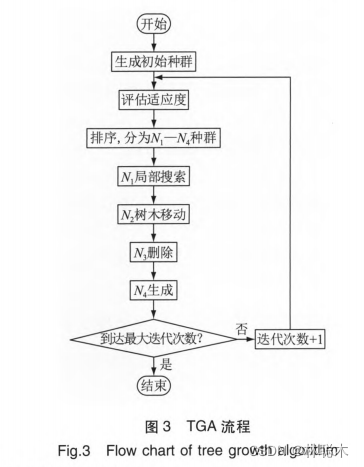
代码实现
MATLAB
TGA.m
% "Tree growth algorithm (TGA): A novel approach for solving
% optimization problems"
function [fitG,Xgb,curve] = TGA(N, max_Iter, lb,ub ,dim, fun)
% Parameters
num_tree1 = 3; % size of first group
num_tree2 = 5; % size of second group
num_tree4 = 3; % size of fourth group
theta = 0.8; % tree reduction rate of power
lambda = 0.5; % control nearest tree
% Limit number of N4 to N1
if num_tree4 > num_tree1 + num_tree2
num_tree4 = num_tree1 + num_tree2;
end
% Initial
X = zeros(N,dim);
for i = 1:N
for d = 1:dim
X(i,d) = lb + (ub - lb) * rand();
end
end
% Fitness
fit = zeros(1,N);
fitG = inf;
for i = 1:N
fit(i) = fun(X(i,:));
% Best
if fit(i) < fitG
fitG = fit(i);
Xgb = X(i,:);
end
end
% Sort tree from best to worst
[fit, idx] = sort(fit,'ascend');
X = X(idx,:);
% Initial
dist = zeros(1,num_tree1 + num_tree2);
X1 = zeros(num_tree1,dim);
Xnew = zeros(num_tree4,dim);
Fnew = zeros(1,num_tree4);
curve = zeros(1,max_Iter);
curve(1) = fitG;
t = 2;
% Iterations
while t <= max_Iter
% {1} Best trees group
for i = 1:num_tree1
r1 = rand();
for d = 1:dim
% Local search (1)
X1(i,d) = (X(i,d) / theta) + r1 * X(i,d);
end
% Boundary
XB = X1(i,:); XB(XB > ub) = ub; XB(XB < lb) = lb;
X1(i,:) = XB;
% Fitness
fitT = fun(X1(i,:));
% Greedy selection
if fitT <= fit(i)
X(i,:) = X1(i,:);
fit(i) = fitT;
end
end
% {2} Competitive for light tree group
X_ori = X;
for i = num_tree1 + 1 : num_tree1 + num_tree2
% Neighbor tree
for j = 1 : num_tree1 + num_tree2
if j ~= i
% Compute Euclidean distance (2)
dist(j) = sqrt(sum((X_ori(j,:) - X_ori(i,:)) .^ 2));
else
% Solve same tree problem
dist(j) = inf;
end
end
% Find 2 trees with shorter distance
[~, idx] = sort(dist,'ascend');
T1 = X_ori(idx(1),:);
T2 = X_ori(idx(2),:);
% Alpha in [0,1]
alpha = rand();
for d = 1:dim
% Compute linear combination between 2 shorter tree (3)
y = lambda * T1(d) + (1 - lambda) * T2(d);
% Move tree i between 2 adjacent trees (4)
X(i,d) = X(i,d) + alpha * y;
end
% Boundary
XB = X(i,:); XB(XB > ub) = ub; XB(XB < lb) = lb;
X(i,:) = XB;
% Fitness
fit(i) = fun(X(i,:));
end
% {3} Remove and replace group
for i = num_tree1 + num_tree2 + 1 : N
for d = 1:dim
% Generate new tree by remove worst tree
X(i,d) = lb + (ub - lb) * rand();
end
% Fitness
fit(i) = fun(X(i,:) );
end
% {4} Reproduction group
for i = 1:num_tree4
% Random a best tree
r = randi([1,num_tree1]);
Xbest = X(r,:);
% Mask operator
mask = randi([0,1],1,dim);
% Mask opration between new & best trees
for d = 1:dim
% Generate new solution
Xn = lb + (ub - lb) * rand();
if mask(d) == 1
Xnew(i,d) = Xbest(d);
elseif mask(d) == 0
% Generate new tree
Xnew(i,d) = Xn;
end
end
% Fitness
Fnew(i) = fun(Xnew(i,:));
end
% Sort population get best nPop trees
XX = [X; Xnew];
FF = [fit, Fnew];
[FF, idx] = sort(FF,'ascend');
X = XX(idx(1:N),:);
fit = FF(1:N);
% Global best
if fit(1) < fitG
fitG = fit(1);
Xgb = X(1,:);
end
curve(t) = fitG;
t = t + 1;
end
end
func_plot.m
% This function draw the benchmark functions
function func_plot(func_name)
[lb,ub,dim,fobj]=Get_Functions_details(func_name);
switch func_name
case 'F1'
x=-100:2:100; y=x; %[-100,100]
case 'F2'
x=-100:2:100; y=x; %[-10,10]
case 'F3'
x=-100:2:100; y=x; %[-100,100]
case 'F4'
x=-100:2:100; y=x; %[-100,100]
case 'F5'
x=-200:2:200; y=x; %[-5,5]
case 'F6'
x=-100:2:100; y=x; %[-100,100]
case 'F7'
x=-1:0.03:1; y=x; %[-1,1]
case 'F8'
x=-500:10:500;y=x; %[-500,500]
case 'F9'
x=-5:0.1:5; y=x; %[-5,5]
case 'F10'
x=-20:0.5:20; y=x;%[-500,500]
case 'F11'
x=-500:10:500; y=x;%[-0.5,0.5]
case 'F12'
x=-10:0.1:10; y=x;%[-pi,pi]
case 'F13'
x=-5:0.08:5; y=x;%[-3,1]
case 'F14'
x=-100:2:100; y=x;%[-100,100]
case 'F15'
x=-5:0.1:5; y=x;%[-5,5]
case 'F16'
x=-1:0.01:1; y=x;%[-5,5]
case 'F17'
x=-5:0.1:5; y=x;%[-5,5]
case 'F18'
x=-5:0.06:5; y=x;%[-5,5]
case 'F19'
x=-5:0.1:5; y=x;%[-5,5]
case 'F20'
x=-5:0.1:5; y=x;%[-5,5]
case 'F21'
x=-5:0.1:5; y=x;%[-5,5]
case 'F22'
x=-5:0.1:5; y=x;%[-5,5]
case 'F23'
x=-5:0.1:5; y=x;%[-5,5]
end
L=length(x);
f=[];
for i=1:L
for j=1:L
if strcmp(func_name,'F15')==0 && strcmp(func_name,'F19')==0 && strcmp(func_name,'F20')==0 && strcmp(func_name,'F21')==0 && strcmp(func_name,'F22')==0 && strcmp(func_name,'F23')==0
f(i,j)=fobj([x(i),y(j)]);
end
if strcmp(func_name,'F15')==1
f(i,j)=fobj([x(i),y(j),0,0]);
end
if strcmp(func_name,'F19')==1
f(i,j)=fobj([x(i),y(j),0]);
end
if strcmp(func_name,'F20')==1
f(i,j)=fobj([x(i),y(j),0,0,0,0]);
end
if strcmp(func_name,'F21')==1 || strcmp(func_name,'F22')==1 ||strcmp(func_name,'F23')==1
f(i,j)=fobj([x(i),y(j),0,0]);
end
end
end
surfc(x,y,f,'LineStyle','none');
end
Get_Functions_details.m
% This function containts full information and implementations of the benchmark
% functions in Table 1, Table 2, and Table 3 in the paper
% lb is the lower bound: lb=[lb_1,lb_2,...,lb_d]
% up is the uppper bound: ub=[ub_1,ub_2,...,ub_d]
% dim is the number of variables (dimension of the problem)
function [lb,ub,dim,fobj] = Get_Functions_details(F)
switch F
case 'F1'
fobj = @F1;
lb=-100;
ub=100;
dim=30;
case 'F2'
fobj = @F2;
lb=-10;
ub=10;
dim=30;
case 'F3'
fobj = @F3;
lb=-100;
ub=100;
dim=30;
case 'F4'
fobj = @F4;
lb=-100;
ub=100;
dim=30;
case 'F5'
fobj = @F5;
lb=-30;
ub=30;
dim=30;
case 'F6'
fobj = @F6;
lb=-100;
ub=100;
dim=30;
case 'F7'
fobj = @F7;
lb=-1.28;
ub=1.28;
dim=30;
case 'F8'
fobj = @F8;
lb=-500;
ub=500;
dim=30;
case 'F9'
fobj = @F9;
lb=-5.12;
ub=5.12;
dim=30;
case 'F10'
fobj = @F10;
lb=-32;
ub=32;
dim=30;
case 'F11'
fobj = @F11;
lb=-600;
ub=600;
dim=30;
case 'F12'
fobj = @F12;
lb=-50;
ub=50;
dim=30;
case 'F13'
fobj = @F13;
lb=-50;
ub=50;
dim=30;
case 'F14'
fobj = @F14;
lb=-65.536;
ub=65.536;
dim=2;
case 'F15'
fobj = @F15;
lb=-5;
ub=5;
dim=4;
case 'F16'
fobj = @F16;
lb=-5;
ub=5;
dim=2;
case 'F17'
fobj = @F17;
lb=[-5,0];
ub=[10,15];
dim=2;
case 'F18'
fobj = @F18;
lb=-2;
ub=2;
dim=2;
case 'F19'
fobj = @F19;
lb=0;
ub=1;
dim=3;
case 'F20'
fobj = @F20;
lb=0;
ub=1;
dim=6;
case 'F21'
fobj = @F21;
lb=0;
ub=10;
dim=4;
case 'F22'
fobj = @F22;
lb=0;
ub=10;
dim=4;
case 'F23'
fobj = @F23;
lb=0;
ub=10;
dim=4;
end
end
% F1
function o = F1(x)
o=sum(x.^2);
end
% F2
function o = F2(x)
o=sum(abs(x))+prod(abs(x));
end
% F3
function o = F3(x)
dim=size(x,2);
o=0;
for i=1:dim
o=o+sum(x(1:i))^2;
end
end
% F4
function o = F4(x)
o=max(abs(x));
end
% F5
function o = F5(x)
dim=size(x,2);
o=sum(100*(x(2:dim)-(x(1:dim-1).^2)).^2+(x(1:dim-1)-1).^2);
end
% F6
function o = F6(x)
o=sum(abs((x+.5)).^2);
end
% F7
function o = F7(x)
dim=size(x,2);
o=sum([1:dim].*(x.^4))+rand;
end
% F8
function o = F8(x)
o=sum(-x.*sin(sqrt(abs(x))));
end
% F9
function o = F9(x)
dim=size(x,2);
o=sum(x.^2-10*cos(2*pi.*x))+10*dim;
end
% F10
function o = F10(x)
dim=size(x,2);
o=-20*exp(-.2*sqrt(sum(x.^2)/dim))-exp(sum(cos(2*pi.*x))/dim)+20+exp(1);
end
% F11
function o = F11(x)
dim=size(x,2);
o=sum(x.^2)/4000-prod(cos(x./sqrt([1:dim])))+1;
end
% F12
function o = F12(x)
dim=size(x,2);
o=(pi/dim)*(10*((sin(pi*(1+(x(1)+1)/4)))^2)+sum((((x(1:dim-1)+1)./4).^2).*...
(1+10.*((sin(pi.*(1+(x(2:dim)+1)./4)))).^2))+((x(dim)+1)/4)^2)+sum(Ufun(x,10,100,4));
end
% F13
function o = F13(x)
dim=size(x,2);
o=.1*((sin(3*pi*x(1)))^2+sum((x(1:dim-1)-1).^2.*(1+(sin(3.*pi.*x(2:dim))).^2))+...
((x(dim)-1)^2)*(1+(sin(2*pi*x(dim)))^2))+sum(Ufun(x,5,100,4));
end
% F14
function o = F14(x)
aS=[-32 -16 0 16 32 -32 -16 0 16 32 -32 -16 0 16 32 -32 -16 0 16 32 -32 -16 0 16 32;,...
-32 -32 -32 -32 -32 -16 -16 -16 -16 -16 0 0 0 0 0 16 16 16 16 16 32 32 32 32 32];
for j=1:25
bS(j)=sum((x'-aS(:,j)).^6);
end
o=(1/500+sum(1./([1:25]+bS))).^(-1);
end
% F15
function o = F15(x)
aK=[.1957 .1947 .1735 .16 .0844 .0627 .0456 .0342 .0323 .0235 .0246];
bK=[.25 .5 1 2 4 6 8 10 12 14 16];bK=1./bK;
o=sum((aK-((x(1).*(bK.^2+x(2).*bK))./(bK.^2+x(3).*bK+x(4)))).^2);
end
% F16
function o = F16(x)
o=4*(x(1)^2)-2.1*(x(1)^4)+(x(1)^6)/3+x(1)*x(2)-4*(x(2)^2)+4*(x(2)^4);
end
% F17
function o = F17(x)
o=(x(2)-(x(1)^2)*5.1/(4*(pi^2))+5/pi*x(1)-6)^2+10*(1-1/(8*pi))*cos(x(1))+10;
end
% F18
function o = F18(x)
o=(1+(x(1)+x(2)+1)^2*(19-14*x(1)+3*(x(1)^2)-14*x(2)+6*x(1)*x(2)+3*x(2)^2))*...
(30+(2*x(1)-3*x(2))^2*(18-32*x(1)+12*(x(1)^2)+48*x(2)-36*x(1)*x(2)+27*(x(2)^2)));
end
% F19
function o = F19(x)
aH=[3 10 30;.1 10 35;3 10 30;.1 10 35];cH=[1 1.2 3 3.2];
pH=[.3689 .117 .2673;.4699 .4387 .747;.1091 .8732 .5547;.03815 .5743 .8828];
o=0;
for i=1:4
o=o-cH(i)*exp(-(sum(aH(i,:).*((x-pH(i,:)).^2))));
end
end
% F20
function o = F20(x)
aH=[10 3 17 3.5 1.7 8;.05 10 17 .1 8 14;3 3.5 1.7 10 17 8;17 8 .05 10 .1 14];
cH=[1 1.2 3 3.2];
pH=[.1312 .1696 .5569 .0124 .8283 .5886;.2329 .4135 .8307 .3736 .1004 .9991;...
.2348 .1415 .3522 .2883 .3047 .6650;.4047 .8828 .8732 .5743 .1091 .0381];
o=0;
for i=1:4
o=o-cH(i)*exp(-(sum(aH(i,:).*((x-pH(i,:)).^2))));
end
end
% F21
function o = F21(x)
aSH=[4 4 4 4;1 1 1 1;8 8 8 8;6 6 6 6;3 7 3 7;2 9 2 9;5 5 3 3;8 1 8 1;6 2 6 2;7 3.6 7 3.6];
cSH=[.1 .2 .2 .4 .4 .6 .3 .7 .5 .5];
o=0;
for i=1:5
o=o-((x-aSH(i,:))*(x-aSH(i,:))'+cSH(i))^(-1);
end
end
% F22
function o = F22(x)
aSH=[4 4 4 4;1 1 1 1;8 8 8 8;6 6 6 6;3 7 3 7;2 9 2 9;5 5 3 3;8 1 8 1;6 2 6 2;7 3.6 7 3.6];
cSH=[.1 .2 .2 .4 .4 .6 .3 .7 .5 .5];
o=0;
for i=1:7
o=o-((x-aSH(i,:))*(x-aSH(i,:))'+cSH(i))^(-1);
end
end
% F23
function o = F23(x)
aSH=[4 4 4 4;1 1 1 1;8 8 8 8;6 6 6 6;3 7 3 7;2 9 2 9;5 5 3 3;8 1 8 1;6 2 6 2;7 3.6 7 3.6];
cSH=[.1 .2 .2 .4 .4 .6 .3 .7 .5 .5];
o=0;
for i=1:10
o=o-((x-aSH(i,:))*(x-aSH(i,:))'+cSH(i))^(-1);
end
end
function o=Ufun(x,a,k,m)
o=k.*((x-a).^m).*(x>a)+k.*((-x-a).^m).*(x<(-a));
endmain.m
%_________________________________________________________________________________
%_________________________________________________________________________________
clear all
clc
SearchAgents_no=30; % Number of search agents
Function_name='F1'; % Name of the test function that can be from F1 to F23
Max_iteration=500; % Maximum numbef of iterations
% Load details of the selected benchmark function
[lb,ub,dim,fobj]=Get_Functions_details(Function_name);
[Best_score,Best_pos,cg_curve]=TGA(SearchAgents_no,Max_iteration,lb,ub,dim,fobj);
display(['The best solution obtained by OPTIMIZER is : ', num2str(Best_pos)]);
display(['The best optimal value of the objective function found by OPTIMIZER is : ', num2str(Best_score)]);
%Draw objective space
figure,
subplot(1,2,1);
func_plot(Function_name);
title([Function_name])
xlabel('x_1');
ylabel('x_2');
zlabel([Function_name,'( x_1 , x_2 )'])
set(gca,'color','none')
grid off
subplot(1,2,2);
semilogy(cg_curve,'Color','b','LineWidth',4);
title('Convergence curve')
xlabel('Iteration');
ylabel('Best fitness obtained so far');
axis tight
grid off
box on
legend('TGA')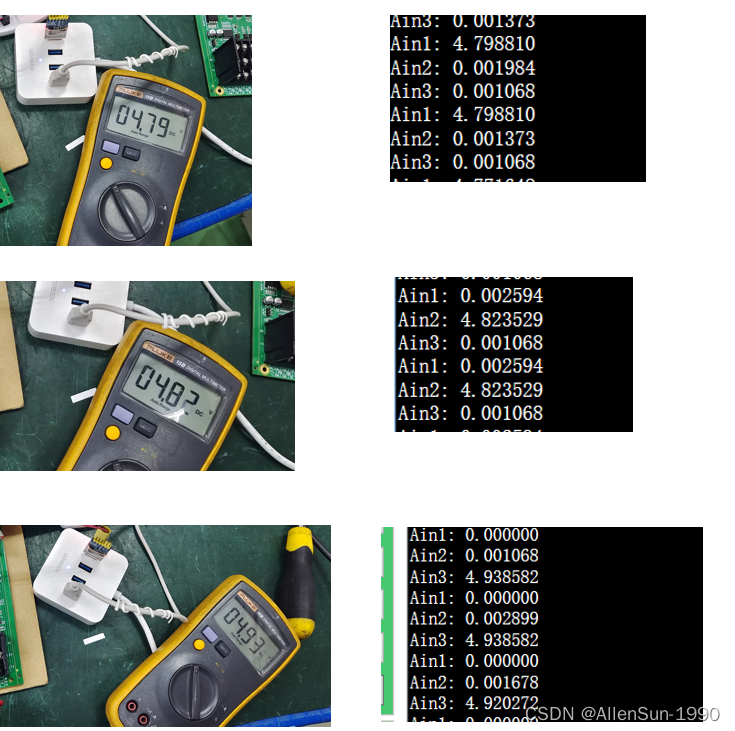



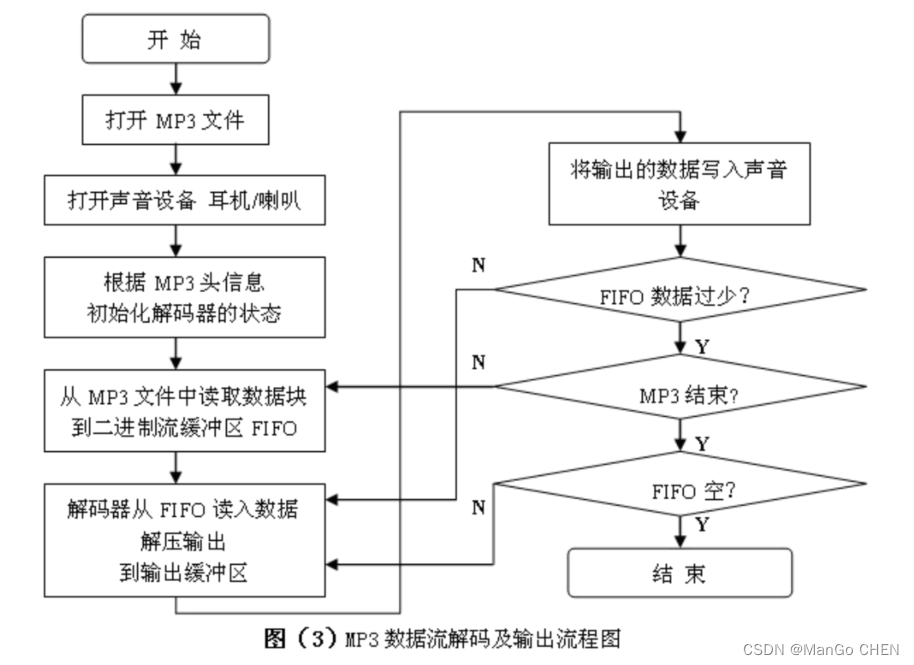




![金和OA C6任意文件读取漏洞 复现[附POC]](https://img-blog.csdnimg.cn/f3c131b979a04662b35e66163591978d.png)
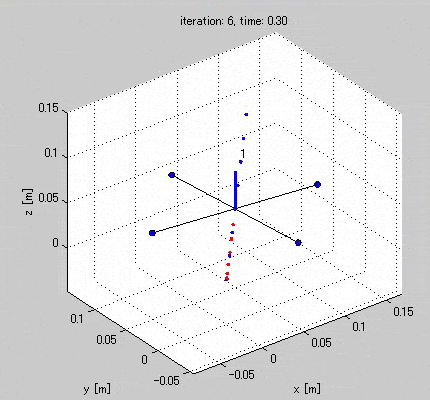




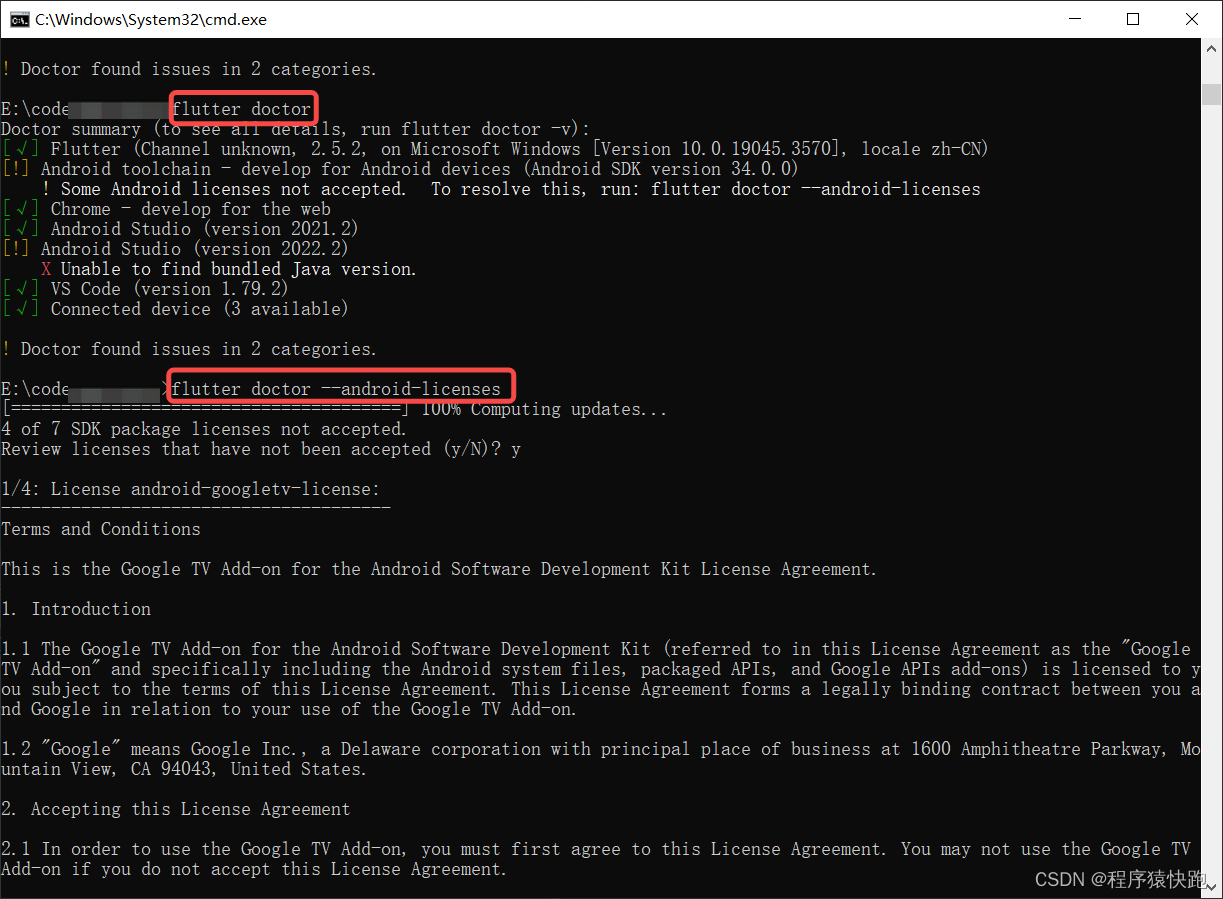
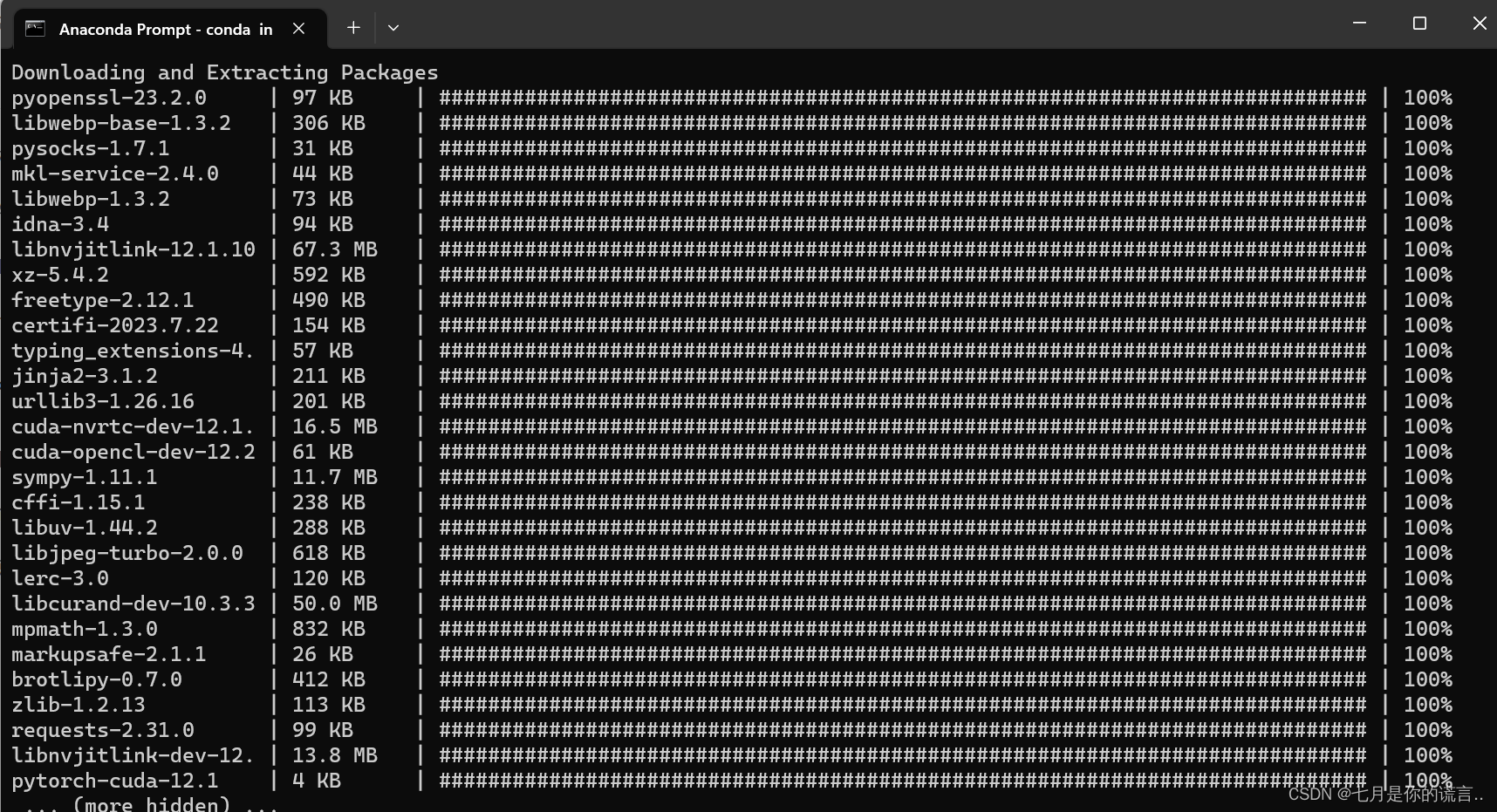


![文件上传 [MRCTF2020]你传你呢1](https://img-blog.csdnimg.cn/424aba2bb4d740088a90045133a3e595.png)